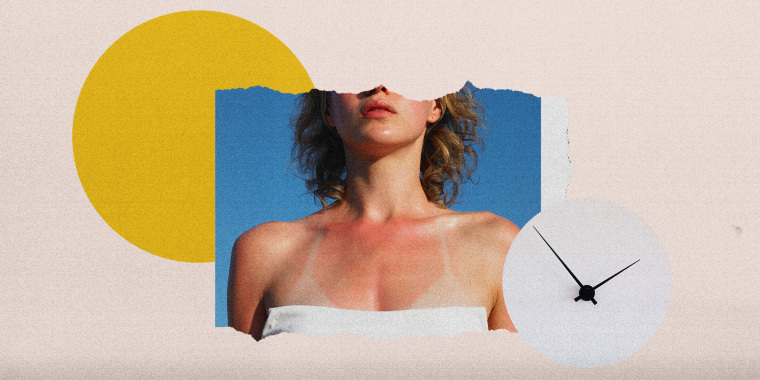We’re all desperate to be outside but as the cliché goes, too much of a good thing isn’t always good for us. Long days baking under the sun’s powerful rays can bring on blistering sunburns that can feel like your skin is on fire. And once UV rays seep into your skin for long enough to actually burn it, the more intense the sunburn. The more intense the sunburn, the longer it can take to heal — a bad sunburn can even linger for weeks.
"Lack of preparation is one of the most common culprits,” explained Dr. Adnan Mir, dermatologist and Society for Pediatric Dermatology committee chair. “I treat wearing sunscreen and sun-protective clothing like any other good habit we teach children, like brushing your teeth, wearing a seatbelt, wearing a bike helmet and not smoking.”
How long does a sunburn last?
The amount of time a sunburn lasts depends on the severity of the burn, but a severe sunburn can last from 10 days to three weeks, said Dr. Samer Jaber, board certified dermatologist, assistant clinical professor of dermatology at the Icahn School of Medicine at Mount Sinai in New York City.
2 big sunscreen mistakes you're probably making
“The most common reasons for sunburn are lack of or insufficient sun protection. This includes not applying enough sunscreen or not re-applying often enough,” explained Jaber. “Sunscreens are protective for up to two hours at most and generally require immediate re-application after exposure to water through swimming or sweating.”
This is why Jaber says there’s “no such thing” as waterproof sunscreen. “Sunscreens labeled ‘water resistant’ will last up to 40 minutes on wet skin and those labeled ‘very water resistant’ will last up to 80 minutes on wet skin,” he said. But if you’re in the pool or on the beach all day, it can be easy to lose track of time and forget to reapply.
Mir says another reason he sees people suffer from painful sunburns is they don’t apply sunscreen thoroughly. “Commonly burned areas are also the areas people tend to miss when applying sunscreen — the ears, nose, back of the hands, and top of the feet. This is especially seen in children, whose skin is thinner than adults and more sensitive to the sun,” he said.
7 home remedies to ease sunburn pain
The best way to ease sunburn pain is to keep the burned skin as cool and moisturized as possible. “Anything that will cool the skin can help relieve sunburn symptoms,” said Mir. “This is why people tend to like to apply yogurt that has been in the fridge.”
1. Stay out of the sun.
“The most important thing (to help heal sunburn) is to avoid any further sun exposure, explained Mir. “Avoid the sun between 10am and 2pm or stay in the shade,” he said.
2. Drink plenty of water.
“A sunburn draws fluids from the rest of the body to the skin's surface,” said Jaber, making you more vulnerable to dehydration.
3. Apply an icepack.
Wrap one in a towel and apply as often as you like. Just avoid directly applying ice to the skin as this can cause frostbite, said Mir.
4. Cover blisters in Vaseline.
“Don’t pop, pick at, or drain blisters — allow them to heal naturally,” said Jaber.
5. Slather on unscented moisturizer.
Keep a bottle in the fridge and apply every few hours to keep skin cool and moist, Mir noted. Aloe vera works wonders, too.
6. Avoid over-the-counter topical antibiotics.
Though Neosporin may seem like a good idea, it can lead to a contact allergy, said Mir. Use topical hydrocortisone to bring down swelling and ease pain instead.
7. Pop a few non-steroidal anti-inflammatories.
Non-steroidal anti-inflammatory drugs (NSAIDs), such as ibuprofen, can help to reduce inflammation and pain by blocking the action of prostaglandins (molecules that cause pain), explained Mir.
How can you tell when your burn is healed?
“Your body will tell you when your skin has healed. The redness and pain resolves, and sometimes the skin starts to peel,” Mir said, adding an important tip: Whatever you do, don’t pick at peeling skin. “Peeling is part of the healing process, and actively peeling your skin may cause further damage.”
Finally, if your skin blisters terribly, seek medical attention. “Widespread blistering sunburns can occasionally be as bad as a thermal burn, leaving the affected person prone to dehydration and infection,” Mir said.






